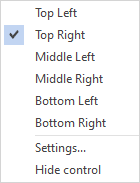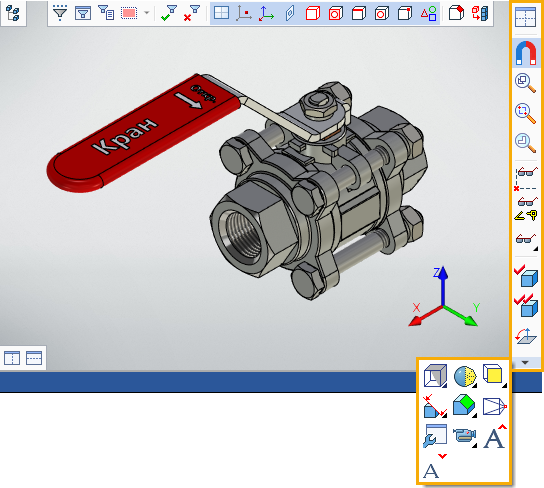View Toolbar |
  
|
Within the ribbon interface layout the View toolbar is a special panel, which is located by default along the right edge of the active view window. If necessary, its position in relation to the active window can be customized using the contextual menu, which appears upon right-clicking ![]() the toolbar:
the toolbar:

The Settings item of the menu invokes the Windows tab of the system options dialog. In addition to the options shown above, the dialog allows to hide the toolbar or show it again, and also allows Classic toolbar position, which means, that the View toolbar will be displayed within the ribbon interface layout in the same was as in the textual layout.
Within the textual interface layout the View toolbar like other instrumental toolbars and is located by default along the left edge of the main system window.
The toolbar contains frequently used commands for managing display of elements in drawing and 3D scene, as well as managing drawing page parameters.
Within the ribbon interface layout the set of commands in the toolbar depends on whether a 2D or 3D window is active.
Within the textual interface layout all commands are displayed regardless of the type of the active window, the latter only affects whether a command can be activated or not.
If an icon of a command is displayed with a black arrow in the lower right corner, then the command contains a drop-down list of additional modes.

If height of the active window is too small to fit all the commands, then some commands are put into the drop-down menu, which can be invoked by pressing an arrow located at the bottom of the toolbar.

Within the ribbon interface layout, the View toolbar contains following commands:
In 3D window |
In 2D window |
||
|
|
||
|
|
||
|
|
||
|
|
||
|
|
||
|
|
||
|
|
||
|
|
||
|
|
||
|
|
||
|
|
||
|
|
||
|
|
||
|
|
||
|
|
||
|
|
||
|
|
||
|
|
||
|
|
||
|
|
||
|
|
||
Within the textual interface layout, the View toolbar additionally contains following options of 2D drawing commands: